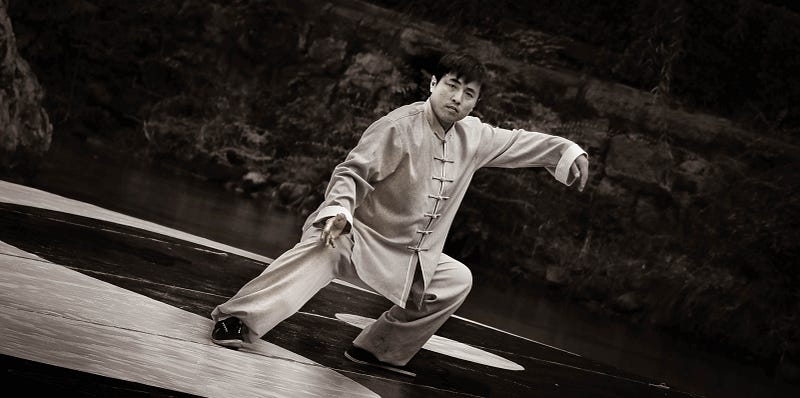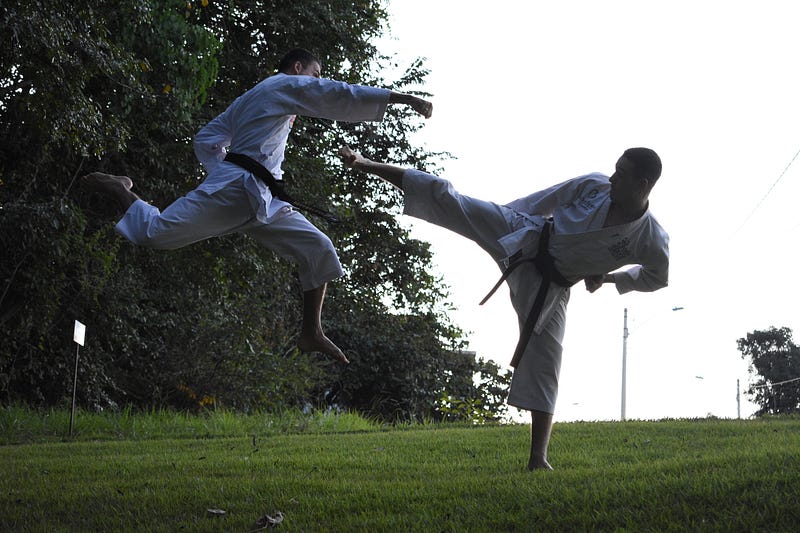Is Kung Fu Good For MMA? Fully Explained

Ever since the very first UFC event held back in the early 90s, people have been arguing over which martial art is the most effective. While some martial arts like Muay Thai and BJJ emerged as the best, Kung Fu has always been somewhere in the middle. On one side, you can often hear that is not practical at all for cage fighting, but on the other, there have been many fighters with a strong background in Kung Fu. Where is the truth?
Kung Fu techniques are good for MMA to some extend, but, it’s crucial to know that this specific martial art has a couple of downsides as well. The main reason why it is not used in MMA that much is because it doesn’t fit well within the rules of the sport, the lack of hard sparring in most schools, and some of its techniques are not that practical.
This is just the tip of the iceberg and let’s look a closer look at how effective Kung Fu is in MMA.
What is Kung Fu?
The term “Kung Fu” is a bit confusing because it has several meanings. Most people think that it is a single martial art style like boxing or wrestling, but this is not the case. In short, Kung Fu stands for Chinese martial arts called “wushu” and “quanfa”. In its original meaning, it also stands for any skills or discipline that you may achieve through hard work, practice, and dedication. And like that is not confusing enough, these skills and disciplines do not need to be associated with martial arts at all.
Next, Kung Fu has dozens of different styles that differ a lot as each one has its own unique techniques, methods of training, and principles. Of course, some of these styles are more effective than others and this is crucial to know when you are discussing whether kung fu is good for MMA or not. Here are the most famous styles of Kung Fu:
- Shaolin Kung Fu
- Wing Chun
- Tai Chi
Is Kung Fu used in MMA?
Yes, Kung Fu is used in MMA but not as much as other arts simply because it doesn’t fit well within the rules of the sport, and its concept is not as practical. Yes, some of its techniques and moves are very effective. But on the other side, there are plenty of flashy moves that would likely get you in trouble if you use them in cage fighting.

Also, bear in mind that fighters still need to develop skills from other martial art as being one-dimensional is bad for MMA. Kung Fu fighters still need to learn how to wrestle, grapple, advance striking, fight on the ground, and how to mix it all together. The primary weapons of most top-level MMA fighters come from boxing, Muay Thai, wrestling, and BJJ. Once they reach a high level, fighters would then elevate their game to another level by adding unorthodox techniques from various other martial arts such as Kung Fu.
That being said, let’s take a closer look at all the downsides of Kung Fu that make it ineffective in MMA, and a less popular option compared with other martial arts.
Why Kung Fu is bad for MMA?
First of all, Kung Fu is a martial art that has really long history, but on the other side, has not evolved much over time, which leads us to the first point.
Evolution of techniques
In most schools, students still learn traditional moves developed a long time ago, and it has barely changed over time.
On the other side, combat sports like boxing or Muay Thai evolve at a really high rate as coaches and fighters are always searching for new ways, methods of training, strategies, and techniques to stay in front of the competition. This is the main reason why, when it comes to training and techniques, Kung Fu is not as practical as other martial arts, which doesn’t mean that is not effective at all.
Concept of training
The other big downside of Kung Fu is the concept of training. Students spend a lot of time drilling techniques in pre-arranged forms. They would do some type of live drills with the partner, but they do not participate in full contact sparring. And this has a big impact on the effectiveness of Kung Fu, and its image in modern-day cage fighting. However, bear in mind that there are dozens of Kung Fu styles, hundreds of different schools, and the concept of training differs a lot between them.
In short, you can’t expect to develop timing, automatic reactions, or learn how to control distance without sparring. Neither you can know if the skills and techniques you learned works in real fighting if have never sparred with the partner. On the other side, boxing and Muay Thai, for instance, put a lot of emphasis on sparring.
Illegal techniques
And for last, Kung Fu is a self-defense martial art that includes a lot of techniques that are banned in MMA. For instance, students learn how to gouge eyes, strike the groin area, throat, and various other moves that are illegal in cage fighting. Executing one of those moves would, in most cases, get you disqualified from a match.
Who are the fighters who used Kung Fu in MMA?
Over the years, there have been many great MMA fighters who have utilized Kung Fu techniques inside the cage. What’s more, some of these athletes are UFC champions. But before you see who they are, bear in mind that these fighters are all-rounded athletes, very skilled in other martial arts like wrestling, BJJ, and Muay Thai. Kung Fu represented just a small portion of their game:
- Tony Ferguson — is a former UFC Interim world champion who is known as a fighter with an unorthodox style. From the way he moves to the way he strikes and defends, everything about Ferguson is awkward mainly due to his background in various arts, including Wing Chun. There are many videos showing Ferguson training on the Wing Chun wooden dummy, and he has been utilized a lot of Kung Fu moves in his fights.
- Kevin Holland — is a top UFC fighter who also fought for various other top promotions like Bellator and King of the Cage. He is one of the most dynamic fighters on the UFC roster who holds a second-degree black belt in Kung Fu. You can often see him utilizing Kung Fu moves, which is the main reason why he is so exciting to watch.
- Dan Hardy — is a former UFC fighter who once fought for the welterweight title against George St. Pierre (lost via decision). He has a strong background in Kung Fu, and he actually once traveled to China to train with Shaolin Monks.







